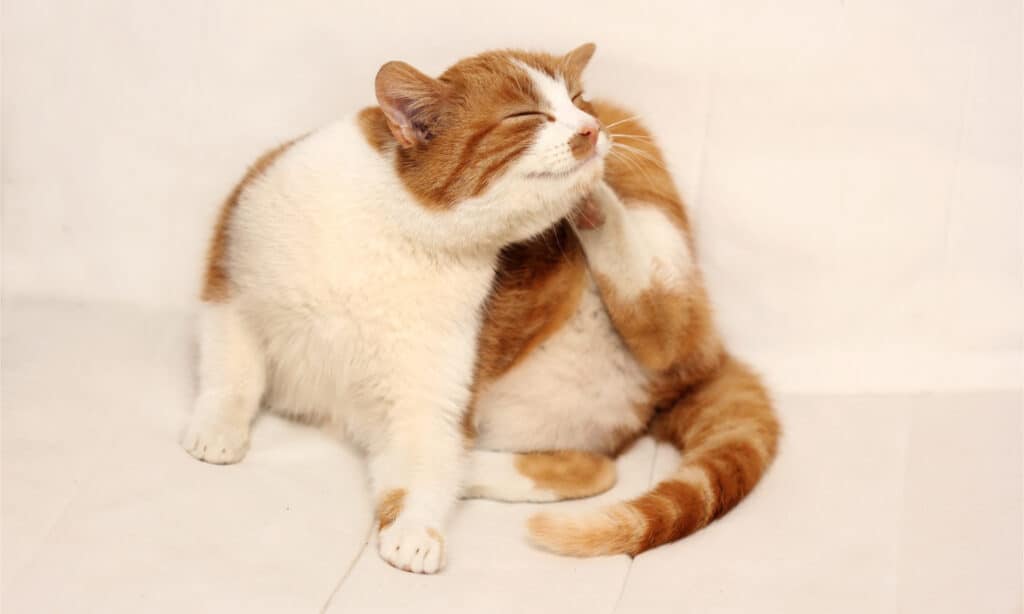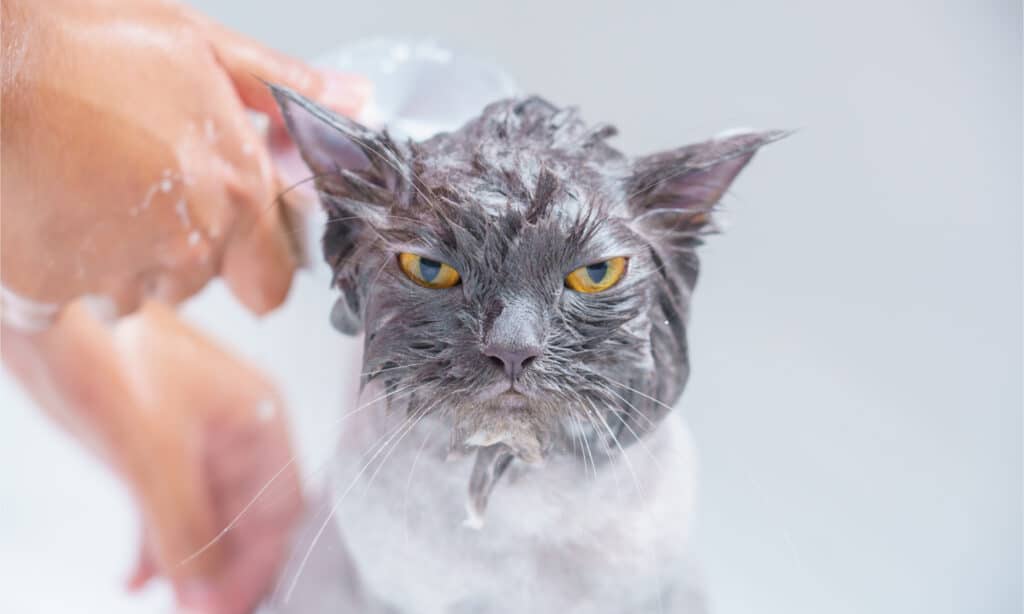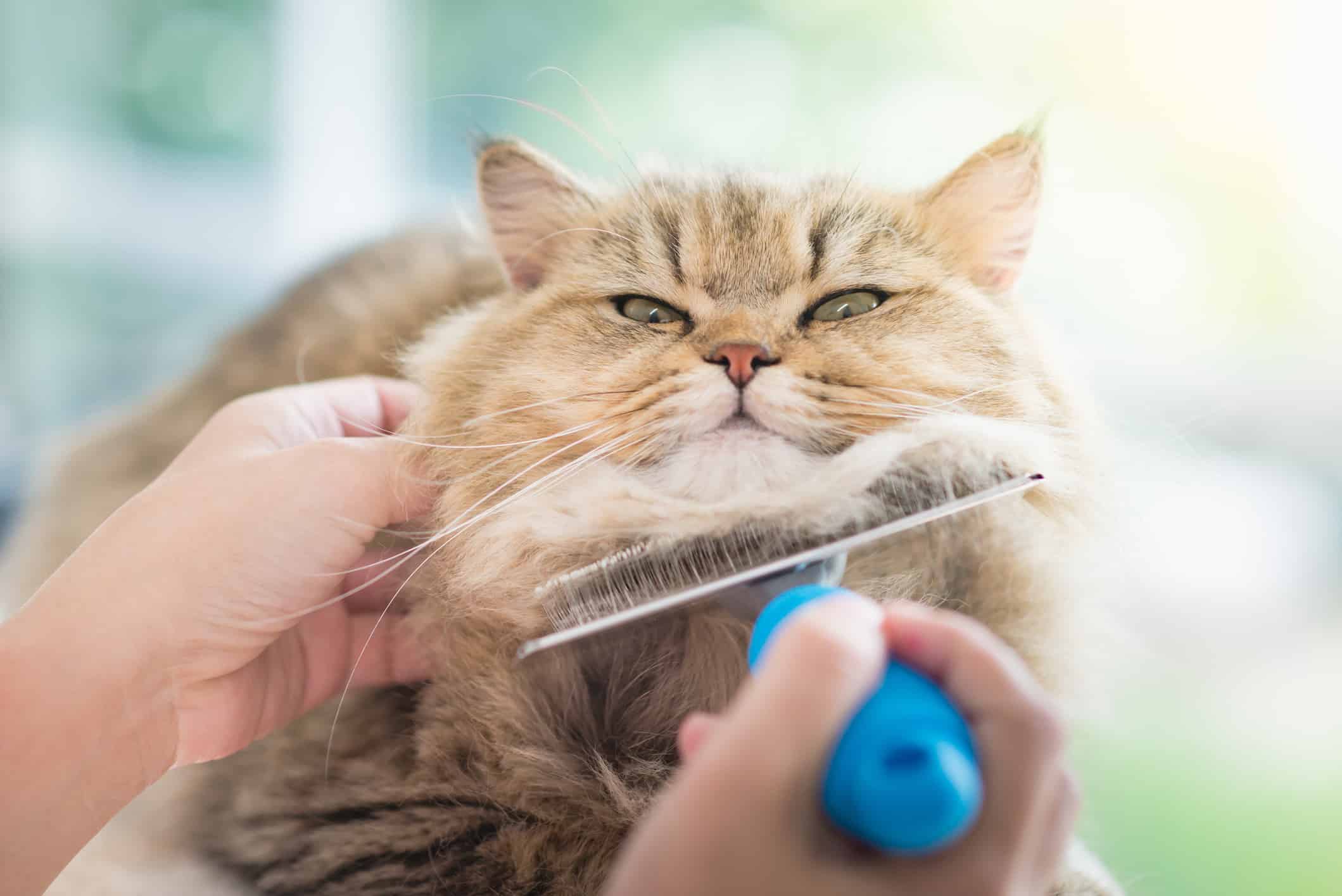It’s easy to spot cat dandruff. It shows up as white or gray flakes on their fur. Usually caused by dry skin, it can make your cat feel itchy. Although most of the time, feline dandruff is a minor inconvenience and can be treated at home, in some cases, it can stem from serious underlying conditions. If your cat has excessive dandruff or other symptoms, it’s best to get it checked out by your veterinarian to find out how best to treat your cat’s dandruff.
Some of the causes of cat dandruff include obesity, allergies, fleas, mites, malnutrition, or dry air. As long as your cat is otherwise healthy, most cases of cat dandruff are easily treated. Read on for seven ways to treat cat dandruff and keep your feline’s coat looking fresh.
1: Brush Your Cat Daily

Cats benefit from daily brushing, and it’s a great way to bond with your furry companion.
©VeronArt16/Shutterstock.com
Brushing your cat’s fur is the first step to keeping their coat shiny and fresh. Not only is it a bonding experience to share with your cat, but brushing your cat’s fur distributes the animal’s natural oils and removes dandruff. Brushing also removes dead skin cells, dust, loose hair, and can improve circulation. Cats with long fur may even need more than one brushing per day.
2: Use a Humidifier

A humidifier will add moisture back to the air and help prevent people and pets from having the dry, itchy skin that causes dandruff.
©Denis Mamin/iStock via Getty Images
Humans aren’t the only ones who suffer from dry skin in the winter. Using indoor heat all winter removes moisture from the air causing skin to get dry and itchy. Dry skin can cause dandruff not only in humans but in pets as well. Try using a humidifier in your home during cold winter months to help add moisture to the air. This can help prevent dry, flaky skin for you and your pets. You can buy a humidifier or try this DIY method for making your own.
3: Feed Your Cat a Healthy Diet

Fish oil supplements can help improve a pet’s skin and reduce dandruff.
©R_Szatkowski/Shutterstock.com
Feeding your cat a healthy diet that gives him the nutrients he needs is important for your pet’s health. Overweight or obese cats can struggle to groom themselves, which can cause flaky dandruff to build up. Also, feeding your cat a diet that includes Omega-3 and Omega-6 essential fatty acids has been found to improve skin health. Some foods are supplemented with fatty acids. You can also buy over-the-counter fish oil supplements to feed your cat. Food allergies can also cause skin issues in pets. You may need to investigate what is in your pet’s food and eliminate anything that may be causing skin irritation or other allergies.
4: Use Flea and Tick Prevention

Flea and tick prevention will protect pets from external parasites.
©Natata/Shutterstock.com
External parasites, like fleas and demodectic mange, can also cause a cat’s skin to develop dandruff. You can buy a variety of flea and tick prevention online or from your vet. Treatments include topical medication, flea collars, and oral chewables. Flea and tick prevention may need to be administered year-round in warm locations, such as Florida.
5: Use a Dandruff or Moisturizing Shampoo

Cats do not need regular baths, but there are times when a special shampoo can help a cat with skin issues.
©BBbirdZ/Shutterstock.com
Cats are expert at cleaning themselves and generally don’t need regular baths like dogs do. But if you have a cat with itchy, irritated skin, you may need to give them a bath with a medicated shampoo. Shampoos formulated for cats can help control dandruff and moisturize skin.
6: Apply Topical Sprays or Oils to Moisturize Your Cat’s Skin

Some owners rub a small amount of coconut oil into their cat’s skin to help avoid dryness and itching.
©iStock.com/white bear studio
When your cat’s skin gets itchy and dry, there are topical oils and sprays you can use to help moisturize their skin. A sparing amount of coconut oil rubbed on your cat’s skin can help with dryness. There are also sprays and topical oils you can buy to treat a cat’s dry skin. Talk to your vet about what topical sprays or oils may help your cat.
7: See Your Vet to Rule out Possible Underlying Conditions

A checkup with your cat’s veterinarian can rule out possible serious underlying causes of cat dandruff.
©Pressmaster/Shutterstock.com
There are times when feline dandruff is due to dry skin or other easy-to-fix causes. But it can also be a sign of other serious underlying conditions. Some of the many causes may include:
- Allergies
- Dry skin
- The build-up of the undercoat from infrequent grooming
- Obesity
- Fleas, mange, and other parasites
- Fungal infections
- The inability of the cat to groom may stem from possible diseases including cancer, diabetes, kidney disease, or pancreatitis)
Your veterinarian can help you determine if your cat’s dandruff can be remedied easily with home treatments, or if it’s a sign of a more serious problem.
Thank you for reading! Have some feedback for us? Contact the AZ Animals editorial team.








